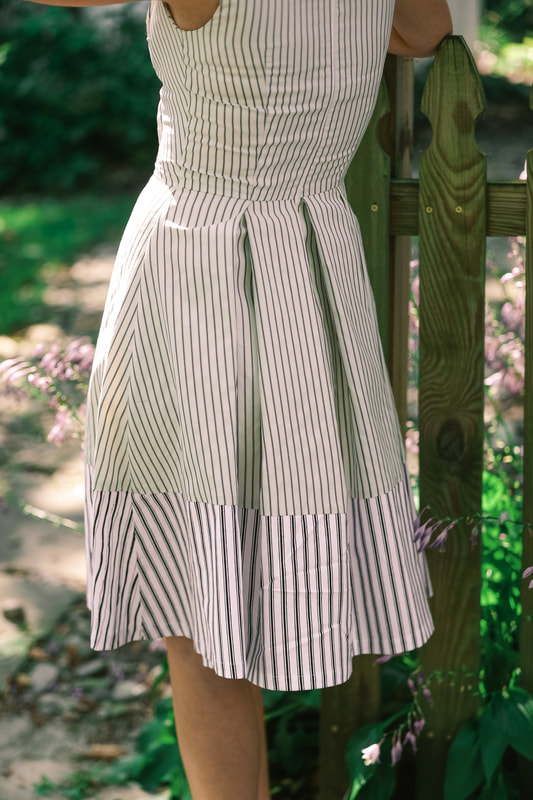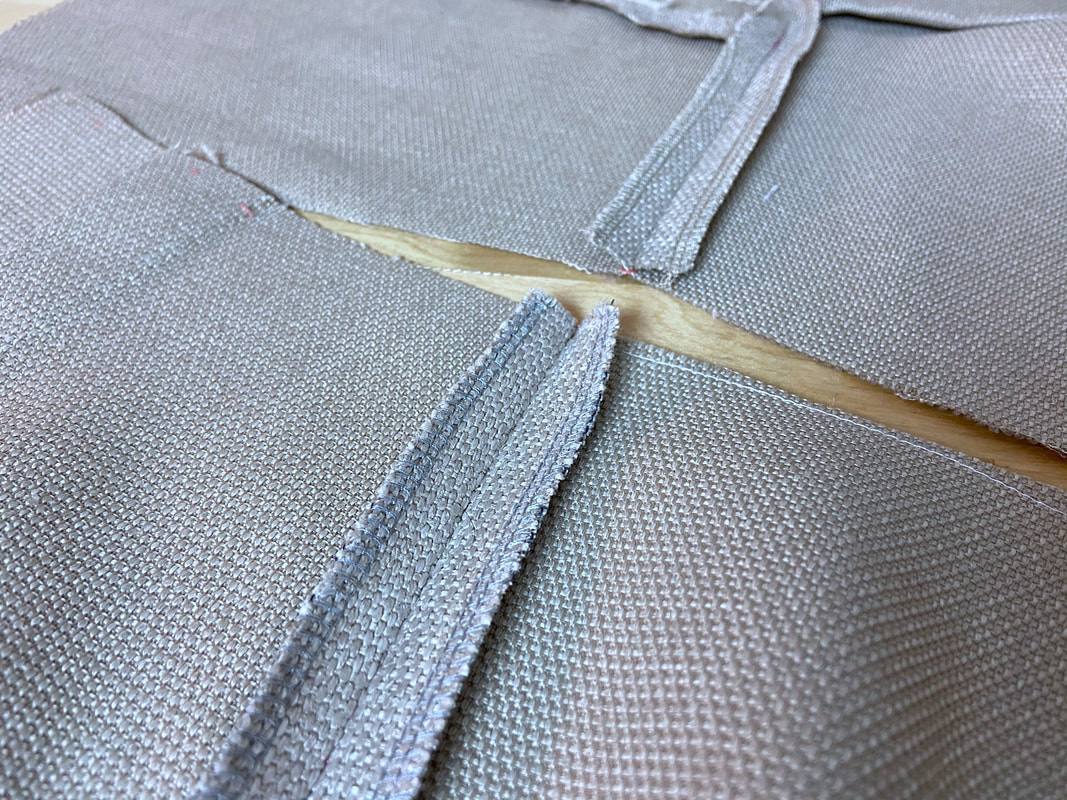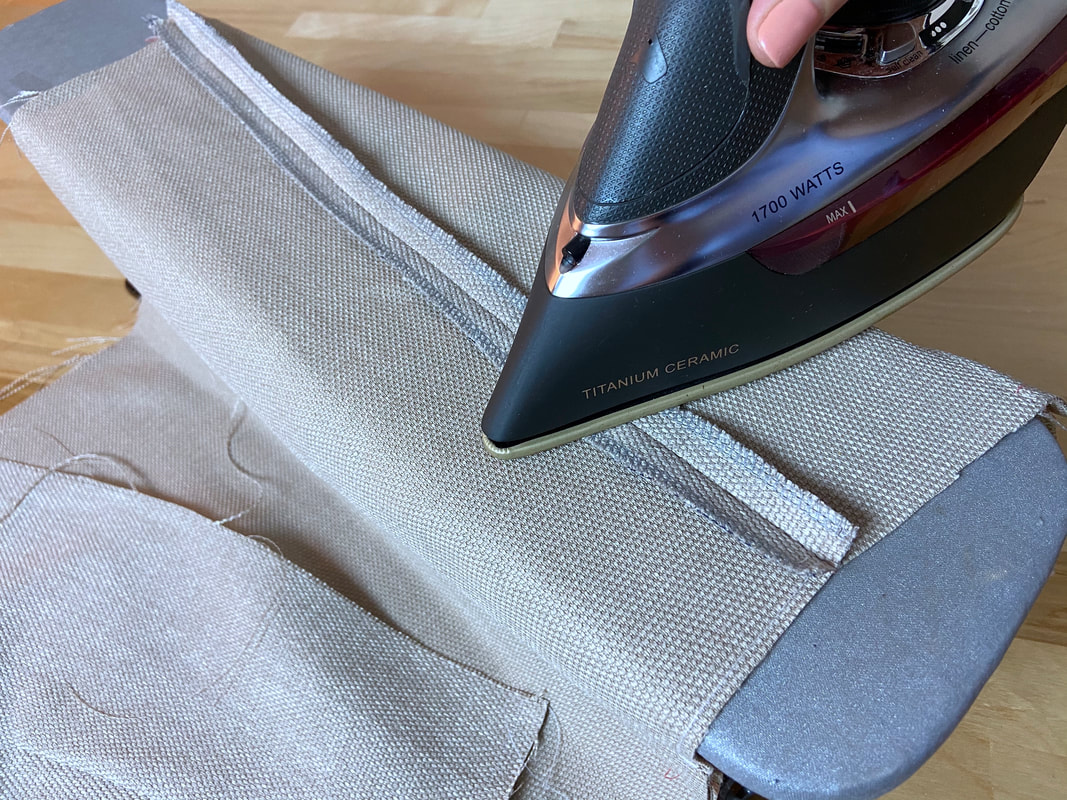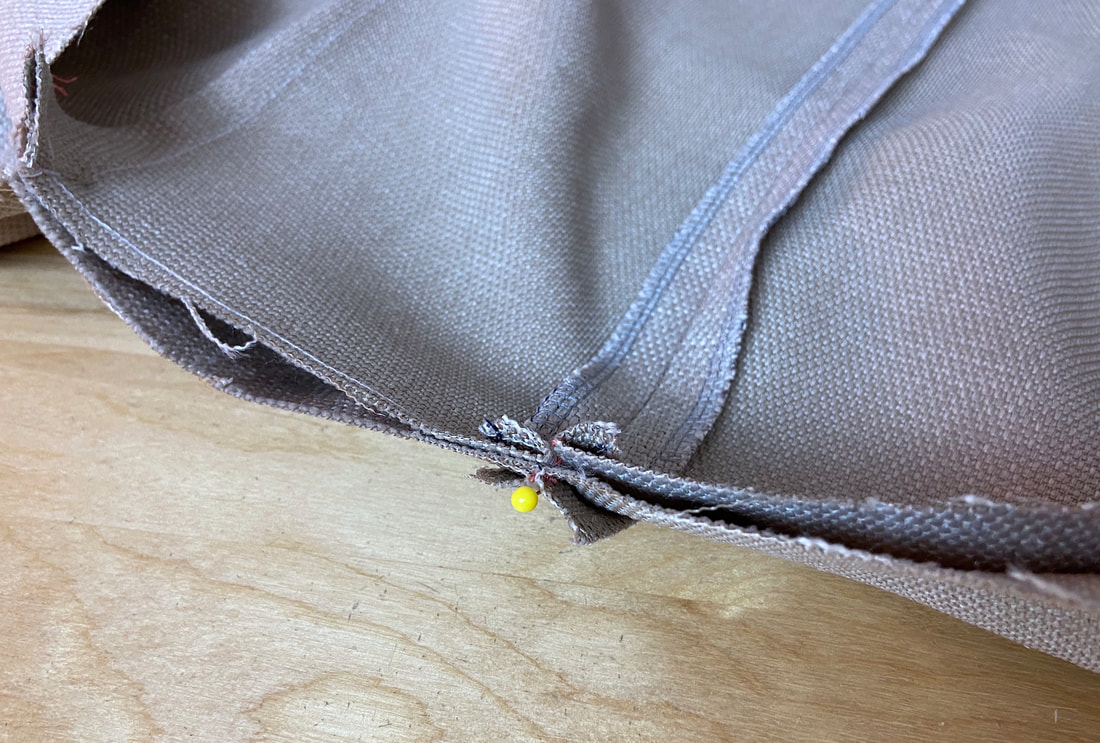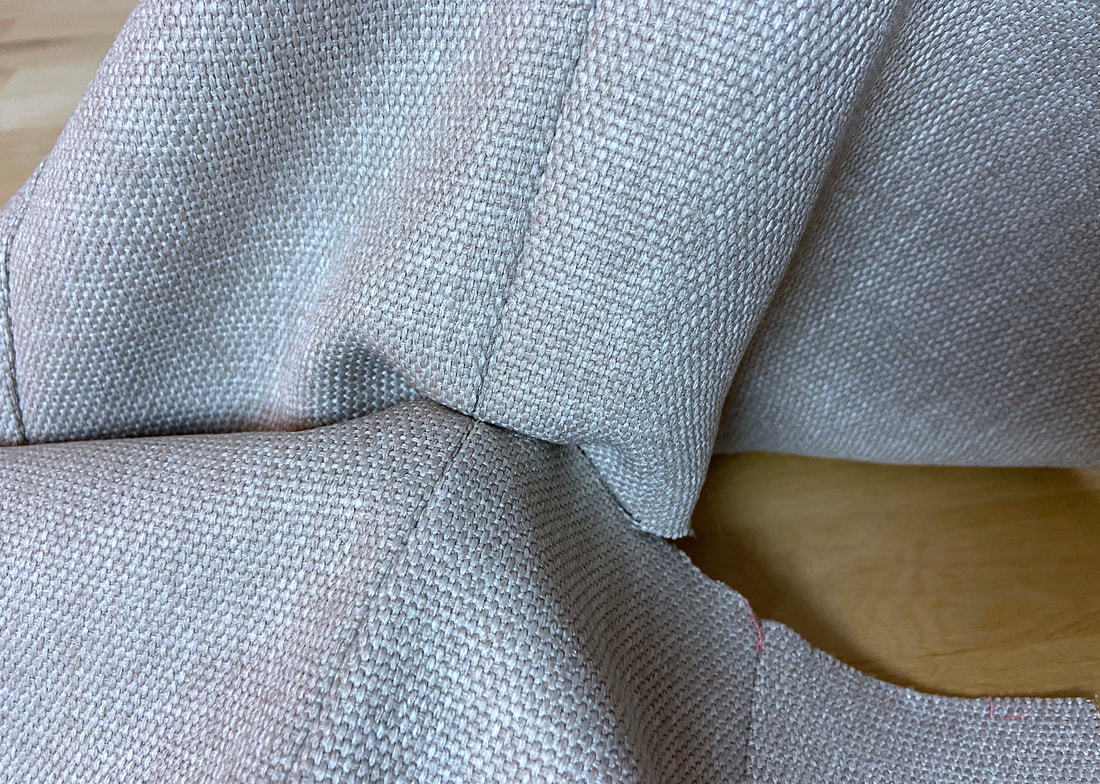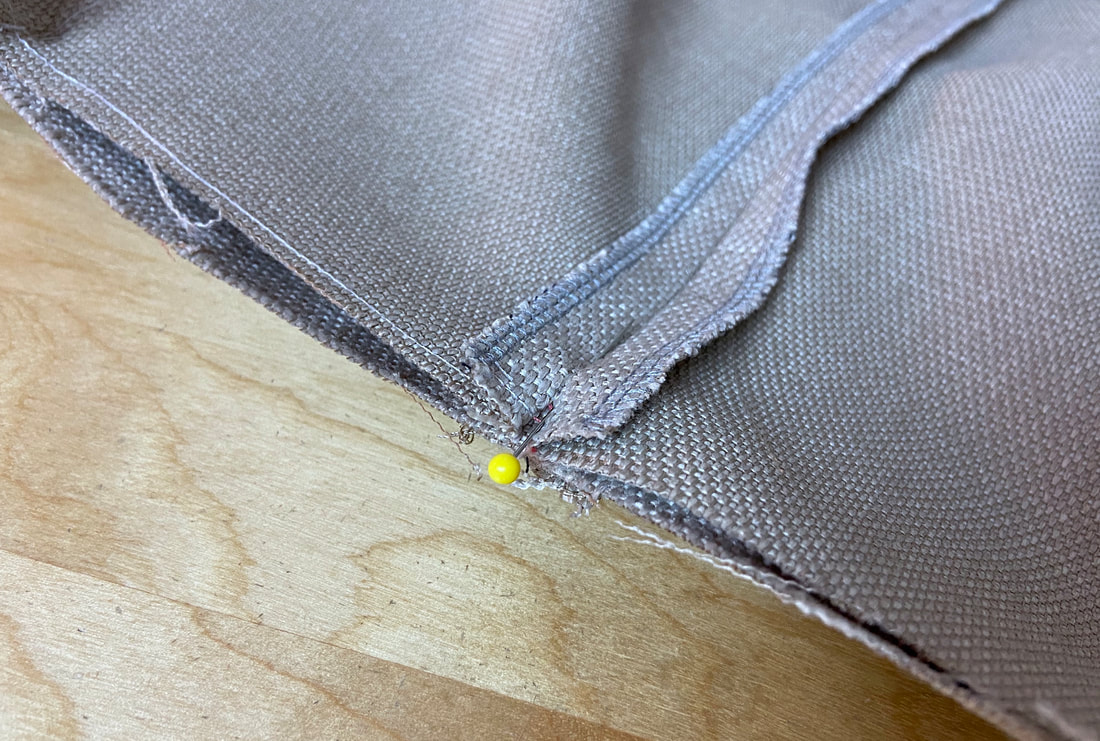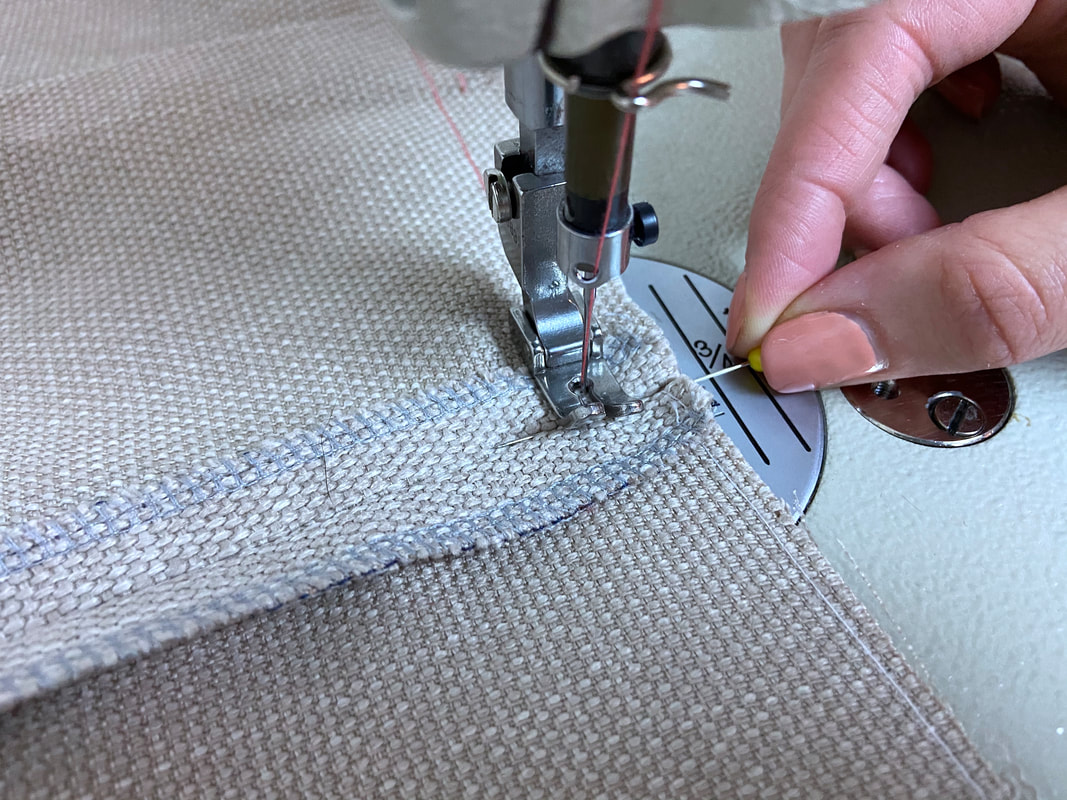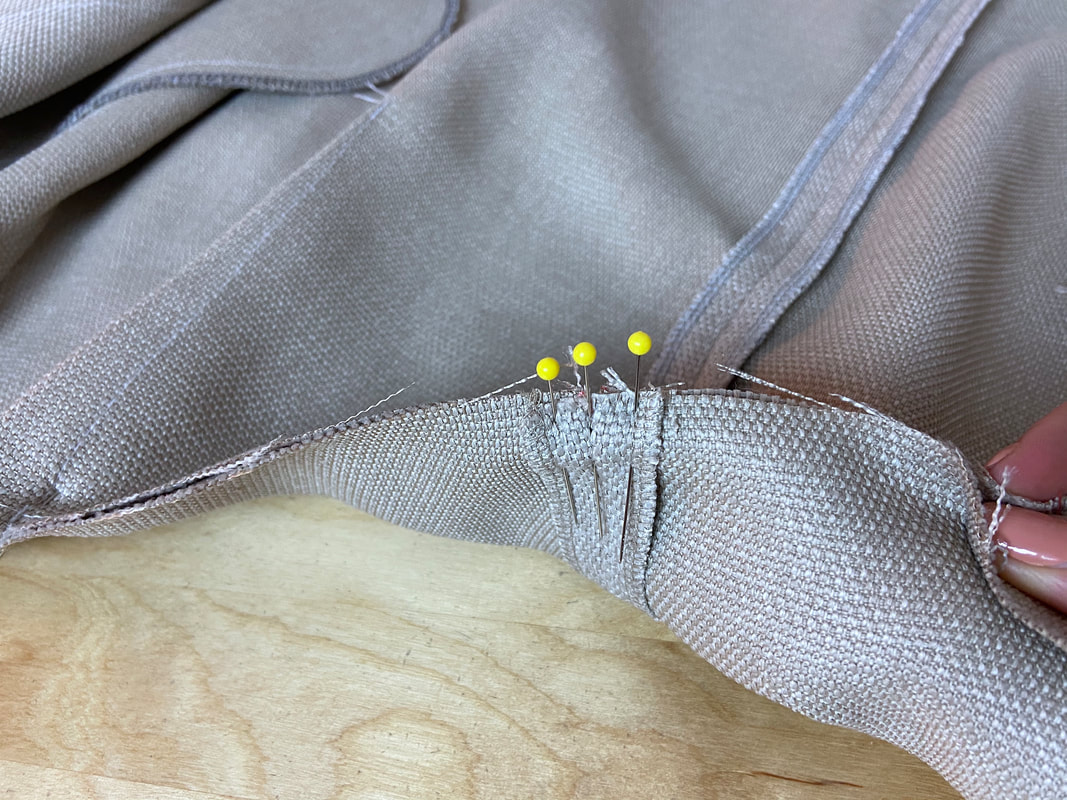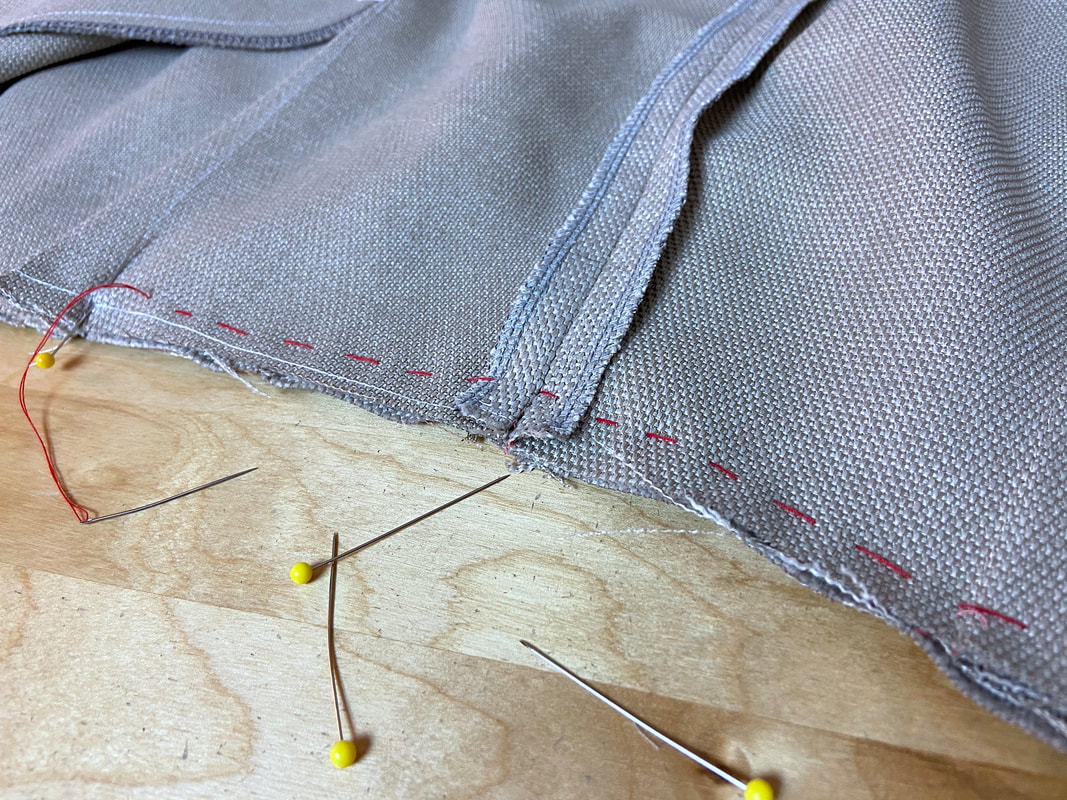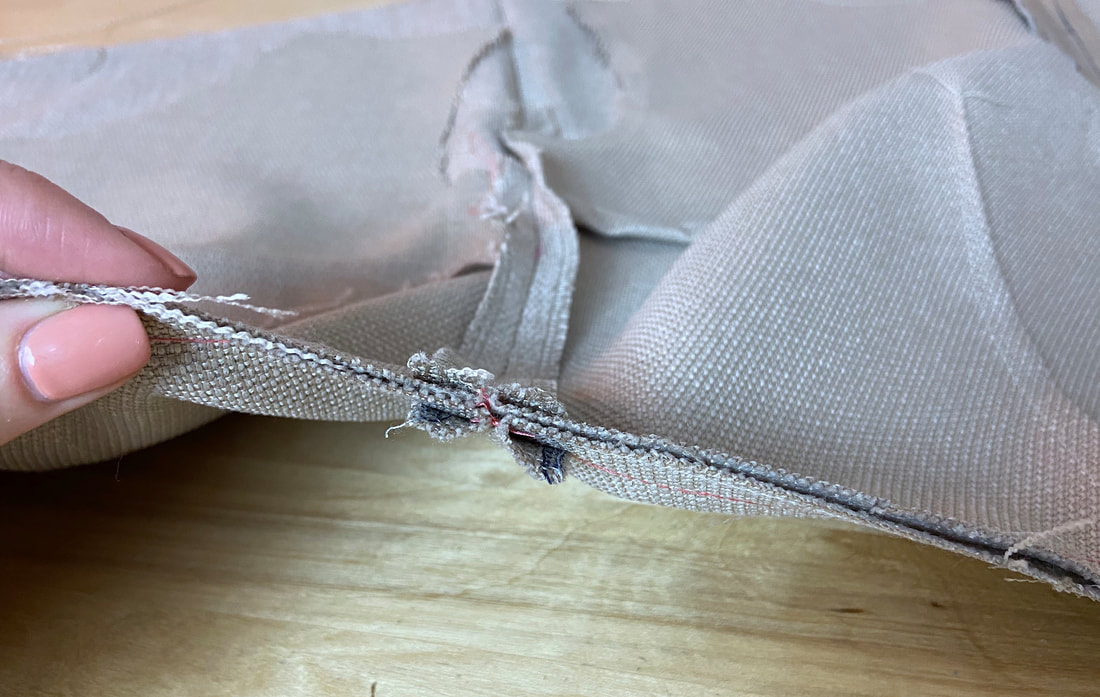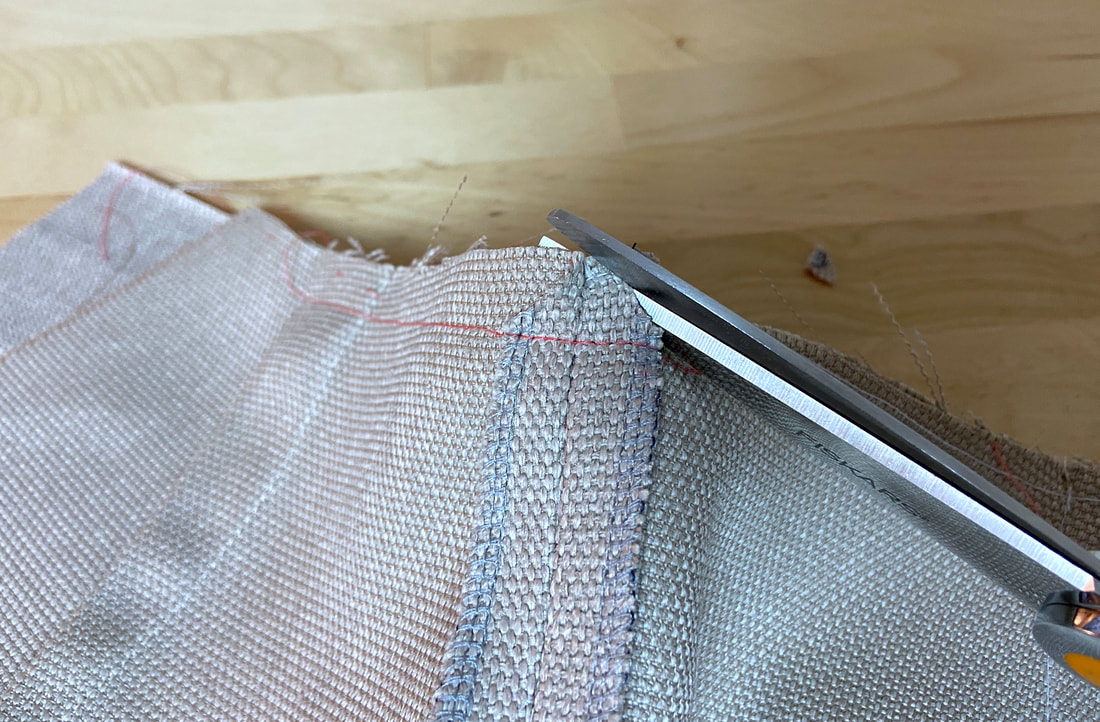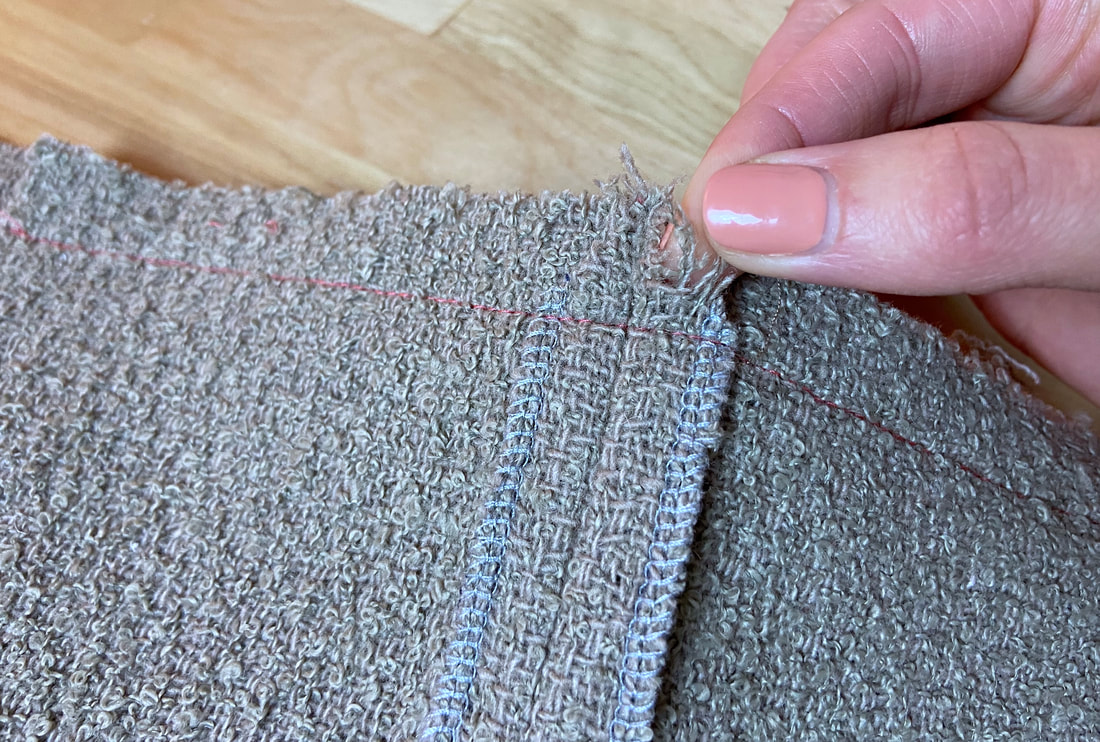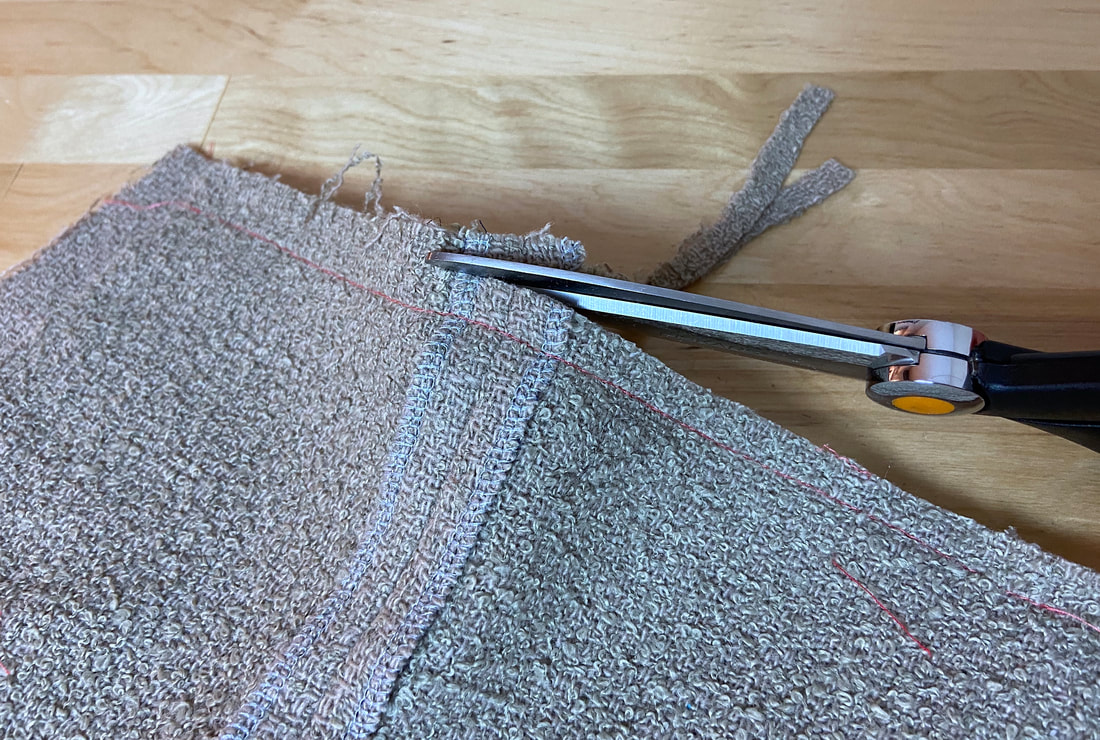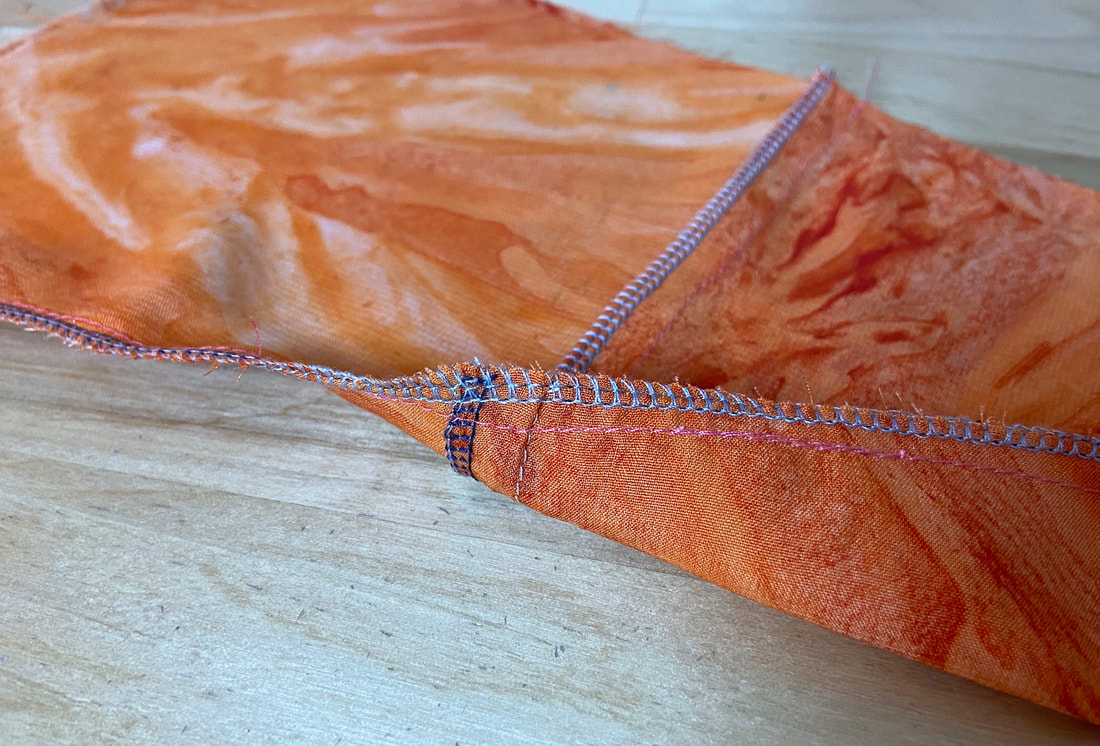What Are Seams With Crossing Seamlines
In the beginning stages of constructing a garment, you’ll find yourself sewing simple, uninterrupted seams. As you progress through the sewing process and start putting all the pieces together, you’ll encounter many seams with crossing seamlines.
So what are seams with crossing seamlines? Let’s take a waistline seam for example.
A waistline seam connects the bodice to the bottom portion of a garment. Naturally, the garment has at least a set of side seams. These side seams will intersect the waistline thus creating a waistline seam with crossing seamlines.
Regardless of whether you are sewing straight, curved or square seams, crossing seamlines are almost always an occurrence in dressmaking.
A seam that features crossing seamlines is not treated any differently than a regular, uninterrupted seam. However, the crossing seam portions have to be pre-treated and aligned carefully according to garment specifications and thus will require some special attention. If you follow the proper consecutive steps, you shouldn’t run into any issues putting these seams together.
When aligning and stitching crossing seamlines, it is important to keep the following rules in mind:
- Clean finish the seam allowance of all crossing seamlines before sewing the main seam. Once the main seam is sewn, you will not be able to go back and properly clean finish the crossing seam allowance edges unless you undo the intersecting stitch at this location.
- Always iron the finished seam allowance in the proper direction, as indicated by your seam allowance finish, before sewing the main seam. This concept goes back to one of the most important rules in dressmaking: As soon as they are stitched, seams should be ironed before moving on to the next step in the sewing process. This ensures that all seams lay smooth and flat in the finished garment.
In the case of seams with crossing seamlines, the seam allowance has to be ironed in the correct direction before the final seam is stitched. Doing so will ensure a smooth connection between the main seam and its crossing seamlines. In addition, ironing the seam allowance beforehand will ensure that both the top and bottom crossing seams are naturally stitched with the seam allowance pointing in the same direction.
A common occurrence, especially with waistline seams, is matching and sewing two crossing seamlines perfectly aligned to each other. In a garment that has a waistline seam, the top and bottom side seams and all darts have to matched perfectly to form continuous connections from the bodice down.
- Sewing crossing seamlines requires them to be aligned face to face with seamlines matching perfectly.
On the face of the garment, this connection should form an uninterrupted seamline.
- When sewing a seam with crossing seamlines, always match the intersecting seamlines first. Insert a pin through both seamlines to keep them perfectly aligned.
- When stitching, do not remove the pin until the machine needle is inserted right next to it. If you remove the pin too soon, the seamlines may shift away from each other. Your best bet is actually walking the machine needle as close to the crossing seamlines as you can before removing the stabilizing pin.
As you machine stitch, it is also important to keep the seam allowance edges of the two crossing seams as flat as possible underneath.
The best way to do this is to first insert a pin through both seamlines as described above, then one pin on each side of the seamlines to keep the seam allowance layers flat. It is common for seam allowance edges to get caught and fold up in the machine stitching process.
- If you find that pins don’t provide enough stability at intersecting seams, you may want to considered hand basting across the seamlines for a more stable alignment. Considering the intersecting seam allowances and the movement of the fabric layers, crossings seams can be difficult to keep perfectly aligned during machine stitching using pins alone. Particularly as a sewing beginner, hand basting will provide a more manageable way to sew these complicated seams, before you become more accustomed to the process.
Finishing Crossing Seam Allowance Edges
So you’ve stitched the perfect seam with crossing seamlines featuring seam allowance edges that lay perfectly flat underneath. The question now becomes how to finish these seam allowances edges? You’ll be glad to know that the same finishing techniques apply to seams that have crossing seamlines as they do for plain seams. However, there is an exception- bulk management.
Seams come with seam allowance, and multiple seam allowance layers meeting at a single point will naturally create some bulk.
When working with thicker, textured fabrics, the additional seam allowance can often create too much excess within the main seam.
To fix the issue, after the parent seam has been stitched, consider clipping seam allowances diagonally at each seam crossing to eliminate the additional bulk. This technique is mainly used with thick, low-fraying fabrics or when there are multiple layers intersecting at the same point.
The notching method may not be appropriate for all fabrics. Be careful with high-fraying, loosely-woven fabrics as trimming them may weaken the seam. In addition, trimming crossing seam allowance in this manner may not always be appropriate for unlined garments that have an exposed underside.
In this case, consider trimming the entire length of the main seam allowance down to a lower width. This will provide a cleaner alternative for minimizing bulk.
When it comes to lightweight fabrics, crossing seamlines create negligible amounts of excess bulk and thus the seam allowance is treated as you would any other, given that the crossing seam allowances are kept flat through the finishing process.

